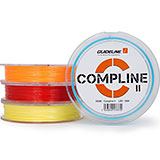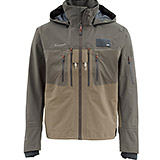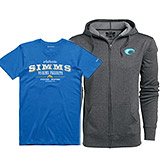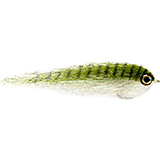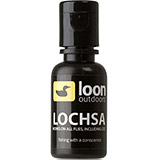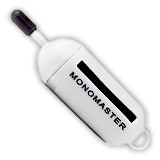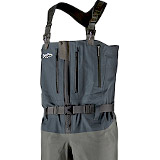Fly Tying Video 'Deer Hair Emerger' for Trout and Grayling
A hatch is in full swing but your dry fly is ignored by Trout and Grayling? Then you are well advised to have a few emerger patterns in your fly box. Lisa Jakuwoski presents her favourite fly for exactly these situations.
Emergers imitate aquatic insect larvae that are in the process of metamorphosis into adults (or flying insects). They bridge the gap, so to speak, between nymphs and dry flies. When the larvae mature, they rise up through the water column and have to break through the water surface. There they encounter a kind of barrier that has to be pushed through. In the process, the tiny insects often wiggle around tantalisingly before opening their wings for the first time. In this phase of hatching, insects are particularly vulnerable. That is why it is not uncommon for Trout and Grayling to really pounce on emergers. The fish attack the easy prey and take little else. With the wrong pattern on the leader, we fly fishers look really stupid.
Lisa's favourite fly is made with only three materials: Deer hair, synthetic body quill and natural dubbing. This pattern mimics the life of an emerger and helps to 'Match The Hatch'. Strictly speaking, this Deer Hair Emerger imitates a rising mayfly and depending on the choice of body material and depending on the size of the special Klinkhammer hook, you can imitate very different types of mayfly - and increase your catch rate enormously. Typical colours for this fly are yellow, olive and brown and with hook sizes #10 to #16 you have most natural models covered.
List of materials
For Lisas Deer Hair Emerger you need:
- Tying thread in matching color (e.g. by Textreme or Veevus)
- Rough Deer Hair (e.g. by Hends or Wapsi)
- Hare's Ear Dubbing or similar natural Dubbing (e.g. by Hends, Swiss CDC or Wapsi)
- Synthetic Quill Body (e.g. by Hareline)
- Gulff Clear UV Resin Thinman
- Gulff Minuteman
- UV-Lamp (e.g. by Gulff)
- Klinkhammer Hook #10 to #12 (e.g. by Partridge, Fasna or Hanak)

Lisas Deer Hair Emerger
Presentation
The correct presentation is particularly important for the success of an emerger. With these patterns it is important that they sit with the abdomen still in the surface film. On the one hand, the curved shape of the Klinkhammer hook is responsible for this, but also the correct greasing of the fly. Because floatant should be used very sparingly on an emerger. Either you only apply a tiny portion carefully to the wings, or (in sectors with calm currents) you fish completly without grease and other products completely. It's also important not to grease the leader or tippet for the last 40-60 cm or so. If only the small wing of deer hair sticks out of the water surface, then you have done everything right.

Nice catch from Slovenia
With a small repertoire of different colours and sizes of this Deer Hair Emerger you are well prepared for the Trout and Grayling season and can react quickly when the fish do not react as usual to patterns floating high on the surface. We wish you lots of fun tying and fishing and of course: Tight Lines!
















